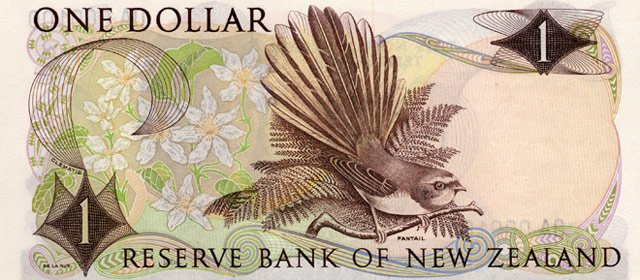Story summary
Varied currency
In the early 19th century a range of foreign coins were used in New Zealand. In 1858 British coins became legal tender (currency that has to be accepted to immediately clear a debt).
Trading banks issued their own notes. They did not have to accept each others’ notes, though most did. Banknote designs were simple at first, but became more complex and ornate in the later 19th century.
Both notes and coins were in short supply, and until 1881 some shops issued their own low-value banknotes and bronze and copper tokens. These were given as change and could only be used at that store.
New Zealand currency
New Zealand issued a national currency in the early 1930s – the last British dominion to do so. In the 1920s there had been a move worldwide for countries to establish central banks which issued national currencies, and New Zealand’s Reserve Bank was set up in 1934.
New Zealand coins (first issued in 1933) and banknotes (1934) featured New Zealand images, including native birds, Māori designs, the coat of arms and the Māori King Tāwhiao. The first series of notes was temporary, and a second series was issued in 1940.
Decimal currency
New Zealand adopted decimal currency (where units are based on powers of 10) in 1967.
The banknotes all had the same design on the front – Queen Elizabeth, and a watermark of British navigator James Cook. The reverse sides featured different designs of native birds and plants. Designing the new coins was an extended and controversial process. Designs by New Zealander James Berry were eventually chosen.
Later changes
In 1990 one- and two-cent coins were withdrawn from circulation, and in 1991 $1 and $2 coins replaced notes.
In 1992 the banknotes were redesigned to feature New Zealanders – mountaineer Edmund Hillary, suffragist Kate Sheppard, Māori politician Apirana Ngata and scientist Ernest Rutherford – as well as the Queen. From 1999 the notes were made of polymer (plastic).
In 2006 the 5-cent coin was withdrawn and the 10, 20 and 50-cent coins made smaller and lighter.
A new series of brighter $5, $10, $20, $50, and $100 notes were released in 2015 and 2016.
Commemorative currency
Commemorative coins and sometimes notes are issued to mark special occasions or to honour individuals. They are legal tender, but are mostly bought by collectors.
People collect coins (and sometimes notes) for their artistic and historical qualities, or as an investment.





